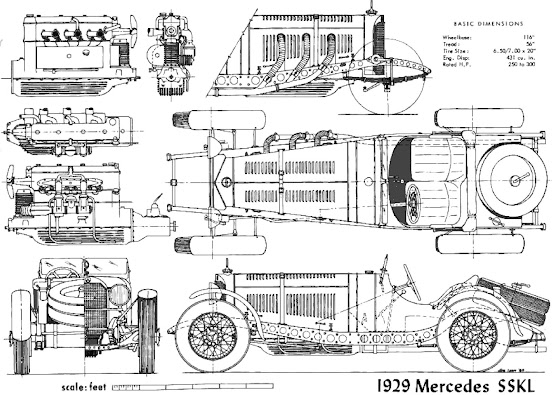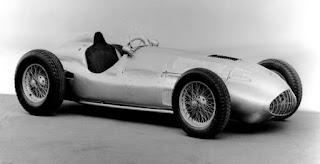Proboscis (pronounced proh-bos-is
or proh-bos–kis)
(1) A
long flexible prehensile trunk or snout, as that of an elephant.
(2) In zoology,
any elongated tube from the head or connected to the mouth.
(3) In entomology
& malacology, the elongate, protruding mouth parts of certain insects and certain
invertebrates like insects, worms and molluscs, adapted for sucking or piercing
(more popularly called “the beak”).
(4) Any
of various elongate feeding, defensive, or sensory organs of the oral region,
as in certain leeches and worms.
(5) In
facetious use, the human nose, the use probably roughly with the size of
prominence of the nose.
(6) In
informal use, as applied in geography, engineering, geometry etc, any
protrusion vaguely analogous with the human nose.
1570-1580:
From the Latin proboscis (trunk of an
elephant), from the Ancient Greek προβοσκίς (proboskís) (elephant's trunk (literally “feeder; means for taking
food"), the construct being προ- (pro-)
(before) + βόσκω
(bóskō) (to nourish, to feed”), from boskesthai (graze, be fed), from the
stem bot- (source of botane (grass, fodder) and from which
English gained botanic), from the primitive Indo-European root gwehs (source also of βοτάνη (botánē) (grass, fodder) + -is (the noun suffix). The related terms include nose beak, organ,
snoot, snout, trunk and probably dozens of slang forms. Other descendents from the Latin include the Italian
proboscide, the Portuguese probóscide and the Spanish probóscide. Proboscis & proboscidean are nouns and proboscidate
is an adjective; the noun plural is proboscises or proboscides. The Greek derived form of the plural (proboscides)
appears often in the technical literature that built using the conventions of
English (proboscises) appears to be the common general form, rare though it is.

Aerodynamics were
of interest to some even in the early days of the automobile and those involved
in motorsport were more interested than most.
For decades, the interest manifested mostly in the art of
streamlining, the reduction of drag and research, accomplished mostly without
wind-tunnel testing and obviously without computers, tended to produce
cigar-shaped bodies with as few protrusions as possible. Drag in many cases was certainly minimized,
some of the shapes rendered in the 1920s & 1930s delivering drag
coefficients (CD) impressive even by twenty-first century standards but it took
a long time before fully it was understood that the fluid dynamics (the
behavior of air) at the rear of a vehicle could be as significant as the more
obvious disturbances at the front. Not
un-related to this was that it also took time (and not a few deaths) before it
was appreciated quite how vital was the trade-off between drag-reduction and
the downforce needed to ensure cars did not “take-off” from the surface, resulting
in instant instability.

The 1923
Benz Tropfenwagen (teardrop vehicle) (left) not only used an aerodynamic nose
using lessons learned from military aviation during World War I (1614-1918) but
was able to optimize the shape because the engine was mid-mounted, something
would wouldn’t become commonplace in Formula One for over thirty years. The front-engined 1931 Grand Prix Mercedes-Benz
SSKL (centre) made few concessions to aerodynamics, relying on power and
weight-trimming but when that approach reached its evolutionary dead-end, a
streamlined SSKL (1932, right) was crafted, limitations on what could be done
with the nose imposed by the bulk and height of the engine.
That
the early attempts at streamlining might induce aircraft-like “take-offs” was
not surprising given so much of the available data came from work in ballistics
and aeronautics where lift is desirable and as speeds rose, it became clear
what would need also to be considered was what air was doing underneath the
vehicle, some cars obviously with "just enough lift to be a bad airplane" as one driver put it. That increase in speed in itself imposed a limit on research, the terminal velocities suddenly possible
exceeding the capacity of ground-effects based wind tunnels and few
manufacturers had access to test facilities with straights of sufficient length
to match those on some race-tracks.
High-speed testing was thus sometimes undertaken by racing drivers at
speeds rarely before explored, something complicated by being among disrupted
air induced by surrounding cars and some unpredictable behavior ensued; it was actually remarkable there weren’t more fatalities than there were.

2020 Jaguar C-Type (XK120-C) (1953 continuation) (left) & 1957 Jaguar XKSS (right).
In the
embryonic study of aerodynamics, one of the first conclusions (correctly) drawn
was that few changes produced more dramatic improvements than lowering and
optimizing the shame of the nose. At the
time, it was something not as simple as it sounded, engines mounted usually
close to the nose and in the era, those usually long-stroke engines were tall,
often in-line units, a shape which imposed limits on what was possible. Jaguar used dry-sump lubrication on the
D-Type (and the road-going derivative the XKSS) to allow the nose to drop a few
inches compared with its predecessor, an expedient also adopted by Mercedes-Benz
for their 300 SL (W198, 1954-1957) and 300 SLR (W196S, 1955), more lowering
still made possible by mounting the power-plant at an acute angle.

1954
Maserati 250F with the original “short nose” body and 1956 (centre) and 1957
(right) variations of the “long nose”.
In the
same era, Maserati, impressed by the speed of the Mercedes-Benz W196 when
fitted with the "streamliner" body used on the faster circuits and, apparently
without the benefit of a wind-tunnel, developed its own partially enclosed
bodywork for its 250F Grand Prix car but it also developed, quite serendipitously,
an even more effective shape and it was initially known as the “long-nose”
250F until it proved so successful it was adopted as the definitive 250F body.

The
long and short of it: The Ferrari 250 LM in long (left) and short (right) nose
configuration.
Ferrari
and others noted the gains aerodynamics provided and among engineers, some
fairly inaccurate (though broadly indicative) "rules of thumb" emerged, based
usually on the calculation that for every one inch (25 mm) reduction in nose
height, an effective gain of so many horsepower would be realized. Precise or not, the method, honed by
slide-rules, lingered until computer calculations and wind tunnels began more
accurately to produce the numbers. Ferrari’s
first mid-engined sports car, the 250 LM (1963-1965), was one of the vehicles
to benefit from a nose job, the revised bodywork fashioned by coachbuilder
Piero Drogo (1926–1973) who had formed the Modena-based Carrozzeria Sports Cars
to service the ecosystem of sports cars that congregated in the region. There was an urban myth the Drogo nose was
created so an “FIA standard size” suitcase could be carried (to convince the
regulatory body it was a car for road and track rather than a pure racing
machine) but it was really was purely for aerodynamic advantage.

Ferrari
250 LM, the short-nose chassis 6321 (left) and the long-nose (5893) right,
Testing
confirmed the “Drogo nose” certainly conferred aerodynamic benefits on the 250 LM
but the change brought it own difficulties because Ferrari was at the time attempting
to convince the Fédération Internationale de l'Automobile (the FIA; the
International Automobile Federation) the 250 LM should be homologated in the
Grand Turismo (GT) category so it could contest the World Sports Car
Championship. This was being done using
the argument the 250 LM was a mere update of the 250 GTO, despite the 250 LM having a different engine & transmission (mid rather than front-mounted)
and a different body. For homologation
to be granted, there had to be 100 essentially identical examples of the model
produced and given (1) there were such fundamental differences from the earlier
250s and (2) not even two dozen 250 LMs had then been produced, the FIA was understandably
reticent. However, as a gesture of good
faith, Ferrari undertook (eventually) to produce the requisite 100 (even
displaying what proved to be a one-off road-going version, complete with a plush interior and electric
windows, to bolster the claim it belonged in the GT category) and issued a very
public recall notice for all 250 LMs to be returned to the factory to be fitted
with the Drogo nose. One 250 LM (chassis
6321) however was by then being raced in Australia which was a long way away so
that one was quietly overlooked (the FIA either turned a blind eye or didn't check), meaning that at least for some time it was the
only “short-nosed” 250 LM left in the world, although it’s known at least two have since
be converted back to their original specification. Eventually, 32 250 LMs would be built and the
FIA didn’t relent, forcing the car to compete in the 1965 championship against
much faster machinery in the prototype class but it was fast enough and
importantly, more reliable than the more fragile prototypes and chassis 5893
won the 1965 Le Mans 24 hour endurance race, Ferrari's last victory in the event.

Ferrari
275 GTB short (left) and long-nose (right).
The
1960s saw the last generation of Ferrari cars styled without the use of wind
tunnels or much in the way of electronic assistance. Even for the road cars, as speeds rose, some
high speed instability was occasionally noted but this became pronounced with
the cars were used in competition, especially on the faster tracks with the
long straights. Accordingly, knowing
there would be a competition version of the 275 GTB (the 275 GTB/C) a long-nose
was created which was also used on other models. The 275 GTB/C was notable also for marking
the swan song of the classic Borrani wire-spooked wheels on Ferrari competition
cars, the elegant, chromed creations no longer strong enough to handle the
increase loads in extreme conditions, replaced by aluminium or magnesium castings.

1969 Dodge Daytona (left) and 1969 Dodge Charger 500 (right).
Across
the Atlantic, on the NASCAR (National Association of Stock Car Auto Racing)
circuits, the manufacturers had reached a dead end imposed by their regulatory
body. By 1969 the NASCAR authorities had
fine-tuned their rules, restricting engine power and mandating a minimum weight
so manufacturers, finding it increasingly harder to cheat, resorted to the then
less policed field of aerodynamics, ushering what came to be known as the brief era of the "aero-cars". Dodge began by making modifications
to their Charger which smoothed the air-flow, labelling it the Charger 500 in a
nod to the rules which demanded 500 identical models for eligibility. It proved less successful than hoped and
Dodge apparently gave up on the design, producing on 392 (although to make up
the numbers they did the next year add an unrelated “500” option to the Charger line and NASCAR generously turned their blind eye).
Not discouraged however, Dodge recruited engineers from Chrysler's soon
to be shuttered (as arms control treaties with the USSR loomed) aerospace &
missile division and quickly created the Daytona, adding to the 500 a
protruding nosecone and high wing at the rear.
Even now, the nosecone would be thought extreme but it worked on the
track and this time the required 500 were actually built. NASCAR responded by again moving the
goalposts, requiring manufacturers to build at least one example of each
vehicle for each of their dealers before homologation would be granted,
something which would demand thousands of cars.
Accepting the challenge, in 1970 Dodge's corporate stablemate Plymouth duly built about two-thousand of
their similar aero car, the Road Runner Superbird, an expensive exercise given
they reportedly lost money on each one.
Now more unhappy than ever, NASCAR lawyered-up, drafted rules rendering
the aero-cars uncompetitive and their brief era ended. So extreme in appearance were the cars they
proved at the time sometimes hard to sell and some were actually converted back
to the standard specification to get them out of the showroom. Views changed over time and they're now much
sought by collectors, selling for up to US$500,000 in the most desirable
configuration.

1969 Ford
Torino Sportsroof (left) 1969 Ford Torino Talladega (right).
As imposing
as the noses developed for the Daytona and Superbird were, it may have been that
much of the modification was wasted effort and an application of the Europeans’
old “inch by inch” rule of thumb might have been as effective. The nose jobs Ford in 1969 applied to their Torino
Talladega and Mercury’s Cyclone Spoiler II were modest compared to what
Chrysler did. The grill was flattened, a
la the Charger 500, the front bumper was replaced with a re-shaped version of
the rear unit from a 1969 Fairlane which functioned effectively as an air-dam
and the leading edge of the nose was extended and re-shaped dowwards. The effect was subtle but on the track,
appeared to confer a similar advantage to the one Chrysler’s rocket scientists
had achieved but Ford had also made some changes which lowered the centre of
gravity and improved the under-body air-flow.
Quite what this achieved has never been documented but the drivers were certainly
convinced, retaining the Talladegas and Cyclone Spoilers as long as possible,
the shapes proving much more efficient than their sleek-looking successors.

Porsche
911 (930) Turbo in profile (left) and Porsche 911 (930) flachbau (slantnose).
When in 1973 regulations forced Porsche to fit more substantial bumpers to the 911 (in production since 1964), it necessitated a change to the front bodywork, the earlier cars became known as the "long hood" and subsequent models the "short hood", both references to the hood (bonnet) being shortened to accommodate the unsightly battering rams. More nose jobs would follow. Between
1982-1989, Porsche produced three generations of the 911 (930) Turbo S with the
flachbau (slantnose) bodywork, a
total of 948 believed built. It seems
there were a few, hand-built prototypes completed by 1980 in addition to one
completed under the factory’s Sonderwunsch
(Special wishes) programme for an individual who was either well-connected or a
very good customer. The 58 first generation
cars lack the pop-up headlamps so associated with the design, instead using smooth,
flat-faced wings with a fibreglass front valance assembly containing twin lamps
either side below the bumper. Nicknamed
the “hammerhead”, the styling divided opinion and was anyway found not to be
compliant with regulations in some markets, thus the substitution of the pop-up
headlamps which appeared during 1983. As
was typical of much which emerged from the programme, the cars were built with
a variety of Sonderwunsch options so there was no one consistent
specification.

1973 Porsche 911 Carrera RS from the long hood era (left) and 1975 Porsche 911 Turbo (930) with the short hood used since the 1974 model year (right). Such is the lure of the early 911s something of a cottage industry has emerged, devoted to "backdating" later cars.
The second
generation flachbau yielded 204 cars,
the styling updated with a simplified air dam containing driving lights and a
centrally mounted oil-cooler, the pop-up headlamps relocated to front wings, a
much admired feature the optional air-intake vents above the pop-ups, something
borrowed from the 935 track cars. Again, other than the structural changes,
there was no standard configuration, each flachbau
reflecting the buyer’s ticking of the option list and any special wishes the
factory was able to satisfy. The third
generation were the most numerous with 686 produced, the increased volume reflecting
the effort made to ensure the cars could be made available in the lucrative US market which eventually received 630 flachbaus. More standardized, production shifted from
the Sonderwunsch’s Restoration and
Repair Department facility (Werks 1)
to the line in Zuffenhausen where the standard 930s were assembled though for ease of completion (and to maintain exclusivity)
the cars were transferred to the Sonderwunsch
for finishing and detailing.

Thomas Wedders (AKA Thomas Wadhouse) from
Yorkshire, England (a member of a travelling "freak show" circus) is
recorded as having enjoyed (sic) the world's longest known human nose, claimed to
be some 200mm (7¾ inches) in length. In
the absence of any verified evidence, the truth of that can't be known but it
may be assumed his nose was very big.
The current record is held by Mehmet Özyürek (b 1949) of Türkiye, his
nose officially measured and found to be 88mm (3½ inches).




































